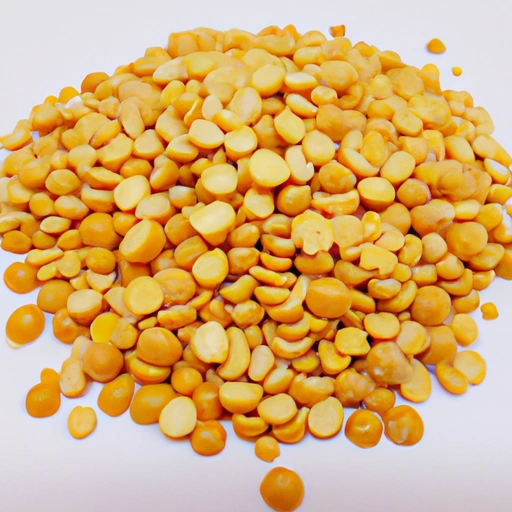Yellow Split Pea
Description

Yellow split peas are a staple in many global cuisines, lauded for their versatility and nutrition. Derived from the seeds of Pisum sativum, they are split and peeled, which allows for quicker cooking. In recipes, they're often measured in both metric (grams, kilograms) and imperial (ounces, pounds) units, with common kitchen volume measurements including cups and tablespoons used in American and sometimes European recipes.
Common uses
Yellow split peas are commonly used in the preparation of soups, stews, and purees. They are also an integral part of traditional dishes such as Indian dal, British pease pudding, and the Swedish 'ärtsoppa'.
Nutritional value
Calories
One cup (approximately 200 grams or 7 ounces) of cooked yellow split peas contains about 230 calories.
Protein
That same cup provides about 16 grams (0.56 ounces) of protein, making them a fantastic plant-based protein source.
Fat
Yellow split peas are low in fat, with one cup containing just over 1 gram (0.04 ounces) of fat.
Carbohydrates
Carbohydrates are abundant in yellow split peas, with one cup offering about 41 grams (1.45 ounces) of carbs, the majority of which is dietary fiber.
Vitamins
They are also a good source of B vitamins, particularly folate and thiamine.
Minerals
Important minerals such as potassium, iron, and phosphorus are present in significant amounts in yellow split peas.
Health benefits
Yellow split peas are beneficial for digestion due to their high fiber content, can aid in blood sugar regulation, and may promote heart health by reducing cholesterol levels. The protein and essential amino acids they contain make them an excellent food choice for vegetarians and vegans looking to boost their protein intake.
Potential risks
For those with gout or kidney stones, moderation is advised because yellow split peas contain purines, which can exacerbate these conditions. Moreover, due to their high fiber content, a rapid increase in consumption may lead to gastrointestinal discomfort for some individuals.
Common recipes
Popular yellow split pea recipes include split pea soup, Indian dal, and hummus-like spreads. They are also used in salads, casseroles, and to make vegetarian patties or fritters.
Cooking methods
Yellow split peas can be boiled, simmered, or pressure-cooked. Soaking is not required, but it can reduce cooking time. They absorb flavors well, making them ideal for slow-cooked dishes.
Pairing with other ingredients
They pair well with robust herbs and spices, such as cumin, coriander, and bay leaves, as well as vegetables like carrots, onions, and celery.
Summary
Yellow split peas are a nourishing and adaptable ingredient, suitable for numerous dishes around the world. They offer substantial health benefits and are easy to incorporate into a variety of culinary traditions, both ancient and modern.